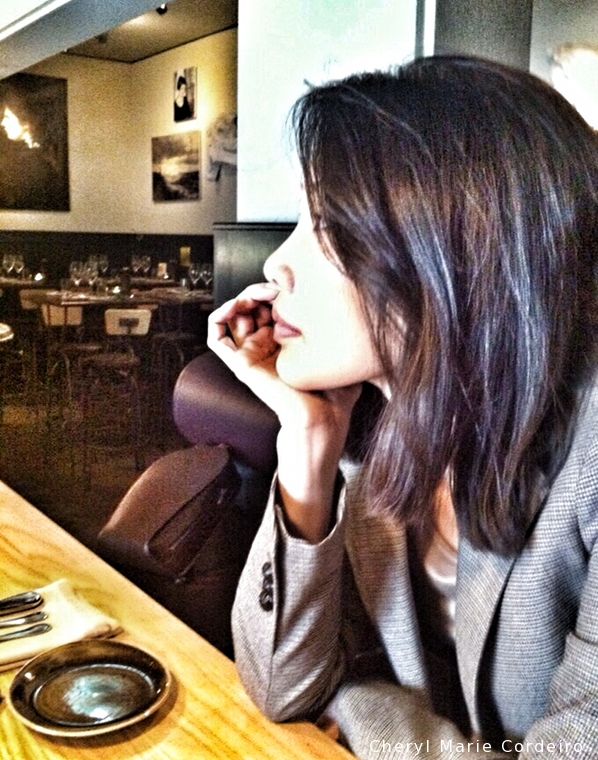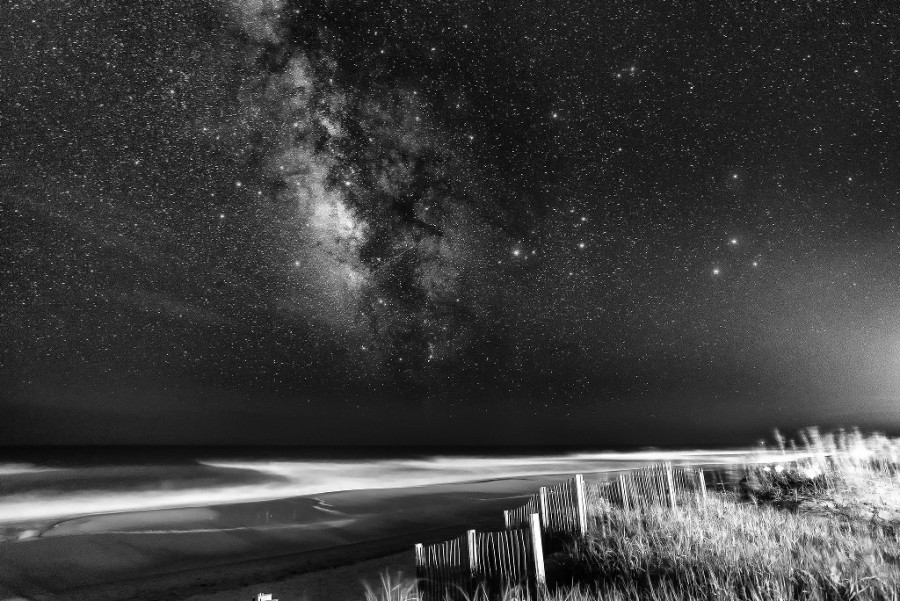In the science of quantum living, the possession of an authentic piece of historic artefact in effect traps a piece of history (what is past) in the present with you (generic) where you are always prisoner. These Spanish pieces of eight from 1752, materially share spacetime with these pineapple tarts made in the last days of 2014. And while one may be trapped forever in the present, a kindness gesture to the future self can be laid, shown here by the making of these pineapple tarts. In the making of these tarts, the past self manages to put in place some nice delicacies for the consumption of the future self. In this, integrity / authenticity of the artefact matters. If the coins were not of the time period, if short-cuts were taken to make those tarts or lousy ingredients used, then what worth is the conversation? Continue reading ”The metafunctions of semiotics, bridging natural and social sciences”
Gödel or Godot? Differing world perspectives in a shared language and culture

Mr. P, Gothenburg, Sweden.
Text & Photo © JE Nilsson, CM Cordeiro 2014
In SINGAPORE. It was the result of a serendipitous meeting along the street. My first reaction was to believe it to be due to path dependency, although I was pretty sure that was too literal a translation of that theory, that led me to after forty-five minutes, the poignant realization that we were seated at a leveled table speaking across levels. Continue reading ”Gödel or Godot? Differing world perspectives in a shared language and culture”
Dichotomy in language: the nought of ’love’

Star Wars V: The Empire Strikes Back – ”For my ally is the Force ” (Force Theme, Yoda’s Theme). Internet resource at http://bit.ly/1hpjB2F.
”YODA: Now…the stone. Feel it.
Luke concentrates on trying to lift the top rock. It rises
a few feet, shaking under the strain. But, distracted by
Artoo’s frantic beeping, Luke loses his balance and finally
collapses. Yoda jumps clear.
YODA: Concentrate! Continue reading ”Dichotomy in language: the nought of ’love’”
Brian Cox: quantum theory and the universe

Shoreline of the Universe by Bill Dickinson. Ref: NASA APOD, 20 Sept. 2014. http://apod.nasa.gov/apod/ap140920.html
Brian Cox, 2013. Lecture on the Universe. Transcript on supernova explosions in the distant galaxies and the use of analogies to daily activities such as the baking of bread to explain the Hubble Law. How the use of analogies and metaphors in language can help in the structuring and understanding of a concept for those outside of the discipline of quantum physics.
[16:22]
now these are rare / you get one supernova per century per galaxy / so very rare / but there are a lot of galaxies / and this is a beautiful picture / i think again / from the hubble space telescope
Continue reading ”Brian Cox: quantum theory and the universe”
”Poetry of Science”: discussion between R. Dawkins and N. deGrasse Tyson

hathe Poetry of Science: Richard Dawkins and Neil deGrasse Tyson. Internet resource at http://youtu.be/9RExQFZzHXQ.
”I will never require you to believe anything” – Tyson
”But Britain is not Europe as we are constantly reminded. That’s right, here we have the English breakfast and the Continental breakfast. That’s very different breakfasts that you can order here.” – Tyson
Continue reading ””Poetry of Science”: discussion between R. Dawkins and N. deGrasse Tyson”
The End of Space and Time? by Robbert Dijkgraaf

Robbert Dijkgraaf’s lecture, ”The End of Space and Time?” at Gresham College, Tuesday, 20 March 2012 – 3:00pm
Barnard’s Inn Hall. Internet resource at http://bit.ly/1sH1Dig
Robbert Dijkgraaf’s lecture given at Gresham College in 2012 that focuses on string theory, quantum gravity, and the interface between mathematics and particle physics, bridges ideas from the various disciplines of science and arts, could be said to be have played a pivotal role in influencing the manner in which I saw the Individual in relation to space and time. Dijkgraaf takes on an evolutionary perspective to space and time, that are ”near to their end”.
From the transcript of the lecture:
”If you go back in more recent history, for instance, Richard Feynman, the famous particle physicist, he has said that if you really do not know mathematics – and do not be worried, there will not be many equations today – but if you do not really know mathematics, you cannot get across the real feeling of the beauty of nature.”
”Not only did we have this unification of space and time but the next ingredient was that space, the stage, so to say, is not rigid, it is flexible, it can curve, it can shape, and it does so under the influence of energy and mass, and that is the phenomena that we call gravitation. So, anything that carries mass or energy will curve the space and time around and thereby space and time became no longer the stage, but an active player in the game. Space and time are something which has physical properties and a future in physical laws, and in fact, it is the influence of this curvature that describes the motion of particles under the influence of gravity.”
”I think the evolving universe, the Big Bang, is part of our culture, and in fact, these images and the discoveries that are made are getting more and more exact and precise. We are living in the age of precision cosmology,…”
Continue reading ”The End of Space and Time? by Robbert Dijkgraaf”
On a tangent note to the evidence of cosmic inflation: Transcending the Cartesian mind body divide
New evidence ”brings ’Theory of Everything’ a bit closer to reality” (Wall 2014)
The bottom part of this illustration shows the scale of the universe versus time. Specific events are shown such as the formation of neutral Hydrogen at 380 000 years after the big bang. Prior to this time, the constant interaction between matter (electrons) and light (photons) made the universe opaque. After this time, the photons we now call the CMB started streaming freely.
Credit: BICEP2 Collaboration.
Helena Granström makes some interesting observations about what science, even the social sciences, have given us over these centuries – a conviction of the functionality of how things are (everything by science can / must be physically empirically quantifiable) but a loss of a true understanding of the intrinsicality of the being of things (here lies the realm of the less than 4% knowledge of the quantum world that even as I write this, a few weeks ago, sat a very bright PhD student in the room and asked, “Is quantum physics really a field of study? Who does quantum physics? What good does it have for us?” To which I was at a complete loss of words, except to reply, “Yes, it’s a real field of study. I think the CERN might be very upset to hear what you just said.”)
Continue reading ”On a tangent note to the evidence of cosmic inflation: Transcending the Cartesian mind body divide”
From Twin Peaks to twin cities: quantum entanglement IRL

Like many other cities in the world, Gothenburg, Sweden, has a ”friendship city” (youhao chengshì) agreement, with the city of Shanghai.
Text and Photo © JE Nilsson, CM Cordeiro 2013
The ideas in this post covers at best, an intuitive and metaphorical exploratory mapping of some aspects of quantum physics theory, to phenomenon that can be observed in the material world so governed by the laws of nature. Perhaps a tall argument to make, but I’ll try here to figuratively map the concept of quantum entanglement onto the observation of its potential manifestation in international business, taking the the example of Twin Cities, defined as two cities in different regions that have made an agreement on for example cultural exchange and economic cooperation.
It is here not to apply the theories of quantum physics to the material world, because that cannot always be, due to that the quantum world has different laws than that of the physical world. But just to sketch an idea that what is now being observed and measured to accuracy in the quantum realm with its attached values, named phenomenon A’ {-V(N) to +V(N)} is perhaps manifested in the material world of classical physics as phenomenon A {-V(N) to +V(N)}, if one were to view it from a systems level perspective, here defined as the manner of progression of development.
Continue reading ”From Twin Peaks to twin cities: quantum entanglement IRL”
There is [increasingly] no spoon
Keanu Reeves in the science fiction-action movie The Matrix (1999).
The small boy is played by Uri Geller. Or not.
Admittedly, I like broad sweeps and this is going to be one of the broader that I take. But please bear with me. We’ll eventually be back to the bar of single origin Ecuadorian dark chocolate. Promise.
First we will need to go back a little bit in time to a scene in the 1999 movie, The Matrix, where a little boy flexes a spoon, bending it at will. He then looks up and says, ”There is no spoon”.
Now, that is a point of view I will try to demonstrate that is increasingly worth being considered. Continue reading ”There is [increasingly] no spoon”
Complex systems theory and the biological organization

An abstraction of Michael Conrad’s (1970) Biological Organization on Clare W. Graves’ (1980) Levels of Existence.
Text and Photo © CM Cordeiro 2013
In reading about self-organizing structures for the relevance of theory applied to the field of international business (IB), I thought the ideas expressed by Michael Conrad in his paper entitled, Statistical and Hierarchical Aspects of Biological Organization (made accessible via NASA) was interesting when also applied to the theoretical constructs of Clare W. Graves’ Levels of Existence.
Conrad discusses the differentiation and uncertainty associated with the organization and variability in a biological organization’s compartmental structures, that are expressed in terms of certain entropy measures. In his paper, he tries to ascertain the most efficient operative level of a biological system, landing on the principle of static equilibrium that he uses vector models for representation. Continue reading ”Complex systems theory and the biological organization”

